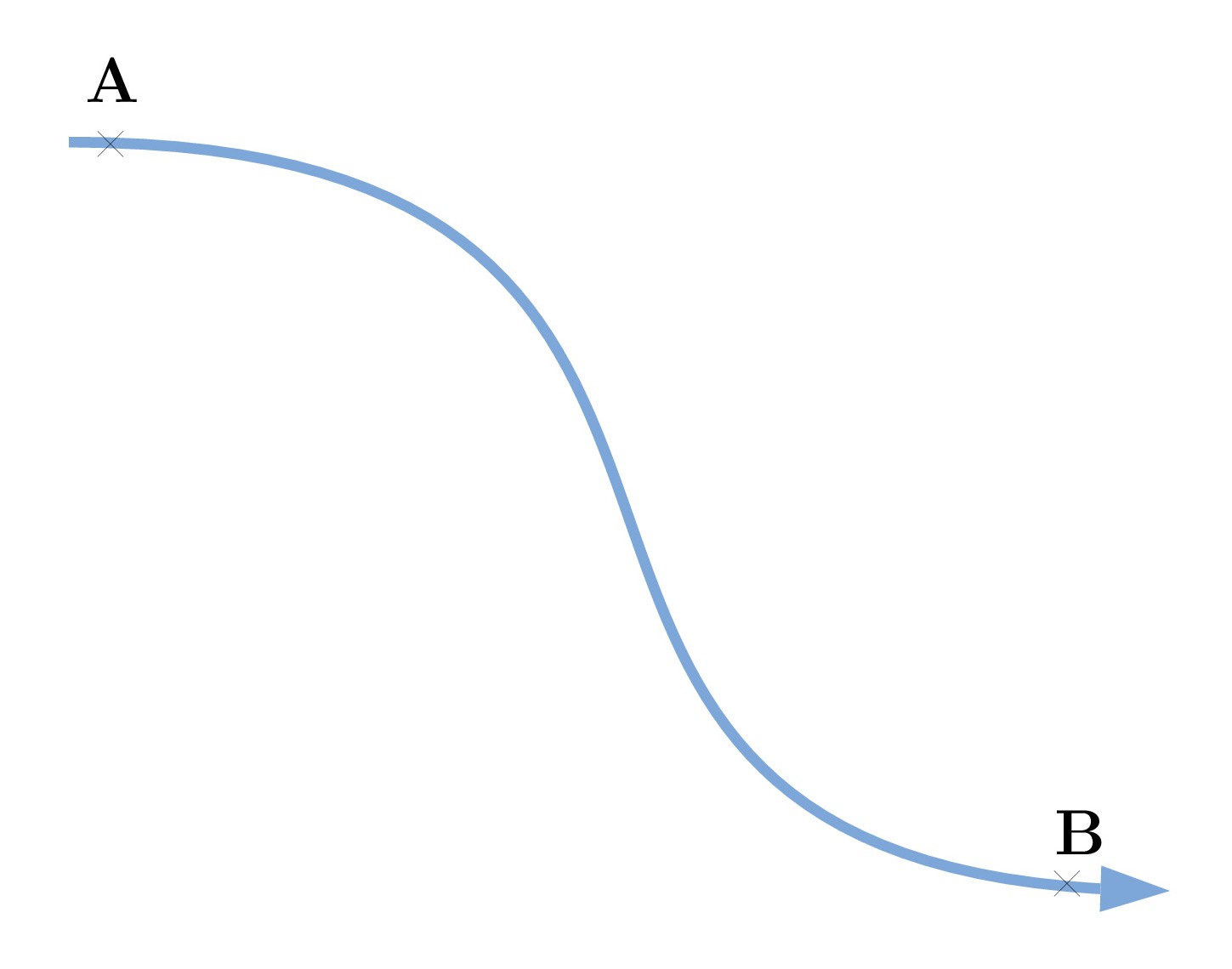Are you one of the 98% of students who consider formulas as well… formulas?
Haha! Shame on you! A formula is so much more than that!
Worry not, by the time you are done reading this short article, your view of physics will have changed forever! (Or maybe not, but I have hopes.)
Let’s take, for example, the time-independent, incompressible flow of an ideal fluid along a streamline which connects point A to point B. Let’s assume we are looking for the velocity ![]() of the fluid at point B.
of the fluid at point B.

According to Bernoulli’s theorem (if you do not know Bernoulli’s theorem, but you know what velocity, pressure, and gravity are, no problem, stay with me, you will understand), we have:
(1) ![]()
and after a bit of rearranging:
(2) 
Which is, as I was saying earlier, so much more than “just” a formula. It is a beautiful relationship between physical things and it is logical, understandable, and pleasant; if you pay attention to what it is telling you:
- The faster the fluid is at A (
 large) [LOOK AT THE FORMULA], the faster the fluid will be at the bottom (
large) [LOOK AT THE FORMULA], the faster the fluid will be at the bottom ( large), and vice versa (the slower the fluid is at A…). [LOOK AT THE FORMULA]
large), and vice versa (the slower the fluid is at A…). [LOOK AT THE FORMULA] - The greater the height difference between A and B (
 large), the faster the fluid will be at the bottom, and vice versa. [Do not be lazy, LOOK AT THE FORMULA!] Even better, if
large), the faster the fluid will be at the bottom, and vice versa. [Do not be lazy, LOOK AT THE FORMULA!] Even better, if  changes,
changes,  changes too. Applying Bernoulli on Mars is… actually very interesting. (Google “Kasei Valles Flood”, if you feel so inspired).
changes too. Applying Bernoulli on Mars is… actually very interesting. (Google “Kasei Valles Flood”, if you feel so inspired). - Same reasoning for the pressure difference (
 ). [LOOK AT… ok, you got it =)].
). [LOOK AT… ok, you got it =)]. - And for the role of the fluid’s mass density
 , which in this case is linked to its inertia: higher fluid inertia, lower velocity at the bottom of the streamline.
, which in this case is linked to its inertia: higher fluid inertia, lower velocity at the bottom of the streamline.
What we have just done is “listened to the formula”. That is, we looked at the effect of each term and wondered if it corresponded to the intuition we had of the situation, if it was logical.
So why am I telling you this? For three reasons, actually:
- Practically, it’s an effective way to check your calculations and a powerful way to avoid losing points in exams: The formula is logical => everything is probably fine, the formula is illogical => you probably need to take a look at your calculations. I do not know of any other way to easily correct sign errors, or silly calculation mistakes like a division that accidentally became a multiplication.
- It’s “pleasant,” when it works, to make the connection between formulas and the real world. Yes, I know, it takes a bit of an emotional commitment to find this pleasant, but 1) the pleasure can be real 2) it is always much more enjoyable than just manipulating expressions without trying to “feel” them.
- Finally, in the rare cases when the formula seems illogical or strange, but is still correct (and you have tripled-checked it, and an eminent textbook or professor tells you it is correct), this act of listening to what the equation is trying to tell you will create an intellectual tension somewhere in your head. This tension is an excellent intellectual preparation for understanding a deep and counterintuitive phenomenon.
For example, the famous formula
(3) ![]()
- When the mass m is large, the energy
 is large. This equation represents the mass-energy equivalence, so okay, that works for me.
is large. This equation represents the mass-energy equivalence, so okay, that works for me. - If the speed of light were to be different, say faster (hypothetically, of course, it’s still a fundamental constant), then the energy would be… greater? HUH?! Well, here you go, intellectual tension. I hope you will come back to explain this to me when it seems clearer to you =)


Pingback: Idea 5 - Use your imagination - Clément Moissard